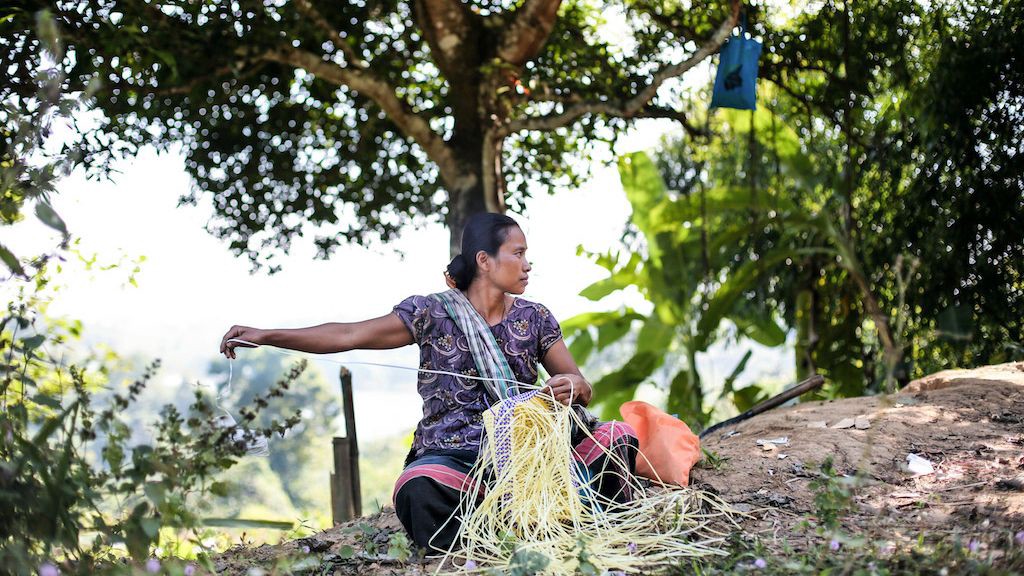Directing investments to women entrepreneurs may seem like a no-brainer, at least for half of our species. But growing those investments presents challenges, particularly in conservative, even patriarchal, countries in Southeast Asia, where many women are left out of business opportunities.
“I think the challenge that faces women [in the region] is they see an imaginary sign on banks that they are not open for business for women,” said Rubin Japhta, a gender finance specialist at the International Finance Corp.
Of the roughly $140 billion in impact investing assets globally, only about 4 percent of that is being invested into Southeast Asia, Julia Newton-Howes, CEO of Investing in Women Initiative, said at the 3rd Sankalp Southeast Asia Summit in Jakarta last week. Huge opportunities exist for investments overall, particularly in women-owned businesses.
“We are with business coalitions of large employers who are looking to increase gender equality, and working with impact investors to close credit gaps, we are working to advocate for equal opportunity,” Newton-Howes said. “The fact that there is a significant gap for women entrepreneurs means [these investors, these countries] are missing out on growth opportunities.”
Investing in Women: Closing the Gender Capital Gap in Southeast Asia
Growth opportunities
As impact investors look to increasingly target Sustainable Development Goal agendas for reducing gender inequality with their investments, Southeast Asia presents a region of both under-tapped potential and challenges.
Investing in Women is a $40 million Australian government initiative working with impact investors and social entrepreneurs to increase gender equality in Indonesia, Vietnam and the Philippines. In emerging markets around the world, around 70 percent of women-owned small-and-medium sized companies find it difficult to tap into the resources of financial institutions in their countries.
Closing gender-credit gaps and supporting women entrepreneurs in these underserved regions could be a major way to support growth and raise incomes in these regions.
“Very few financial enterprises have recognized the opportunity of investing in women,” Japhta said. “In Vietnam, women [small and medium-sized businesses] are more than twice as likely as men to use a credit card to finance their business.”
“Yet in Indonesia, when women apply they are more likely to succeed in getting a loan than their male counterparts,” she said. “Women are definitely not more risky. In most cases they are better credit risks. In most markets women have had less access to land and buildings as collateral for loans, so they are looking at alternate sources of capital.”
Investment-ready
In the Philippines and Indonesia, only around 47 percent of women participating in the labor force, a World Economic Forum report from 2016 indicated.
Along with Vietnam, the countries have low rates of women in management roles, particularly Indonesia and Vietnam, with rates between 20% and 26%. Rates for women in top leadership positions range from 22% to 29%. The numbers are even worse for women sitting on boards of publicly traded companies, with rates ranging from around 5% in Indonesia and Vietnam. The Philippines’ rates of 12% is closer to the global average of 12.7%.
Dondi Hananto, Indonesia representative of Patamar Capital, which is partnering with Investing in Women, said his group has been increasingly engaged in discussions about how to incorporate gender-lens investments into practice.
“These are earlier stage investments than what we are used to,” Hananto said. “A lot of women are starting businesses and our thesis is that there are little barriers to starting a business, but how women [in these countries] scale up is the issue. This is what we are trying to solve.”
For Patamar this means directing investments of around $200,000 and 300,000 to those women entrepreneurs who are at the point of scaling up, and finding mentors to help build the capacity of those that may not exactly be ready to jump to the next level.
“There are lot of really good businesses that may not be ready to receive investments, so our goal is to get them investment ready,” Hananto said. “This is not about being politically correct. From a business point of view it is the right thing to do.”
On the ground
Bob Webster, managing director of DC-based Small Enterprise Assistance Funds, said his group is a “big believer in women entrepreneurs” and directs around 40 percent of its investments toward them.
“Investing in women? Why wouldn’t anybody?” Webster asked. “There are so many talented women entrepreneurs, it knocks your socks off. What’s the problem? It is not only about equity and fairness, but it is about good investment, which it is.”
Also a partner in the Investing in Women initiative, Webster said there are “great investment environments” in the three countries. “It is important to have local teams. It is not effective to have people doing deals out of Washington, New York or London [without that local support and knowledge.”
Privately, impact investors say that often in the region it is the women themselves that think they are greater risks. They overestimate the risks and also underestimate the amount of investment that they need to scale up. Getting in on the ground and deeply discussing the business scenarios with potential entrepreneurs is increasingly important for determining the real risk and the real levels of investment, they say.
Coming up with a clearer picture of how impact investments are being made in Southeast Asia as a whole will be an important part in discovering gender-lens investment gaps there, participants said.
Abhilash Mudaliar, research director for the Global Impact Investing Network, another partner in the initiative, said his group is establishing a gender-lens investment working group of select people out of the 250 member organizations globally, hopes to get better data on both the investments going toward women but the whole impact investing landscape in Southeast Asia in the near future.
The research will detail “Who has been making the investments, what the volume of investments are, and what has been the impact,” Mudaliar said. “We need to bridge these data and knowledge gaps to make investors more informed.”











